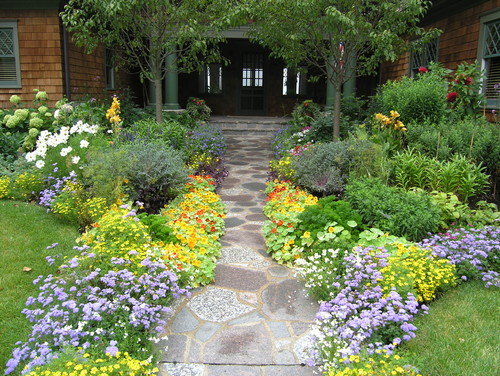More and more families are getting their hands in the dirt and producing their own vegetable and herbs. It’s a great way to get all involved from young to old. Traditional vegetable gardens are in raised beds or directly in the prepared soil beds. You may even find a vegetable garden on someone’s balcony (in pots that is!).
The traditional vegetable garden can be as fancy as this:
Or as simple as this:
Don’t have room for the traditional Vegetable Garden? The trend now is to plant your fruits, vegetables, and herbs right next to your shrubs and perennials. If you are already planting annuals, it would be easy to substitute some of those for some veggies or herbs. They can but put directly into the garden or you could incorporate planters. Vegetables don’t have to be ugly and you don’t have to eat them either.
Check out these spectacular mixed gardens:
Listed below are some varieties that are just as beautiful as they are functional.
You can find these and other great varieties at Restoration Seeds!




